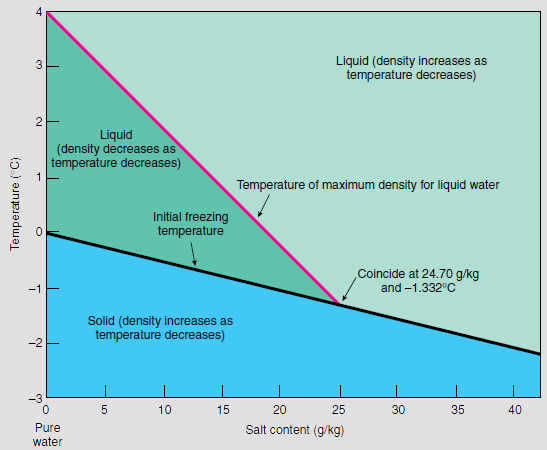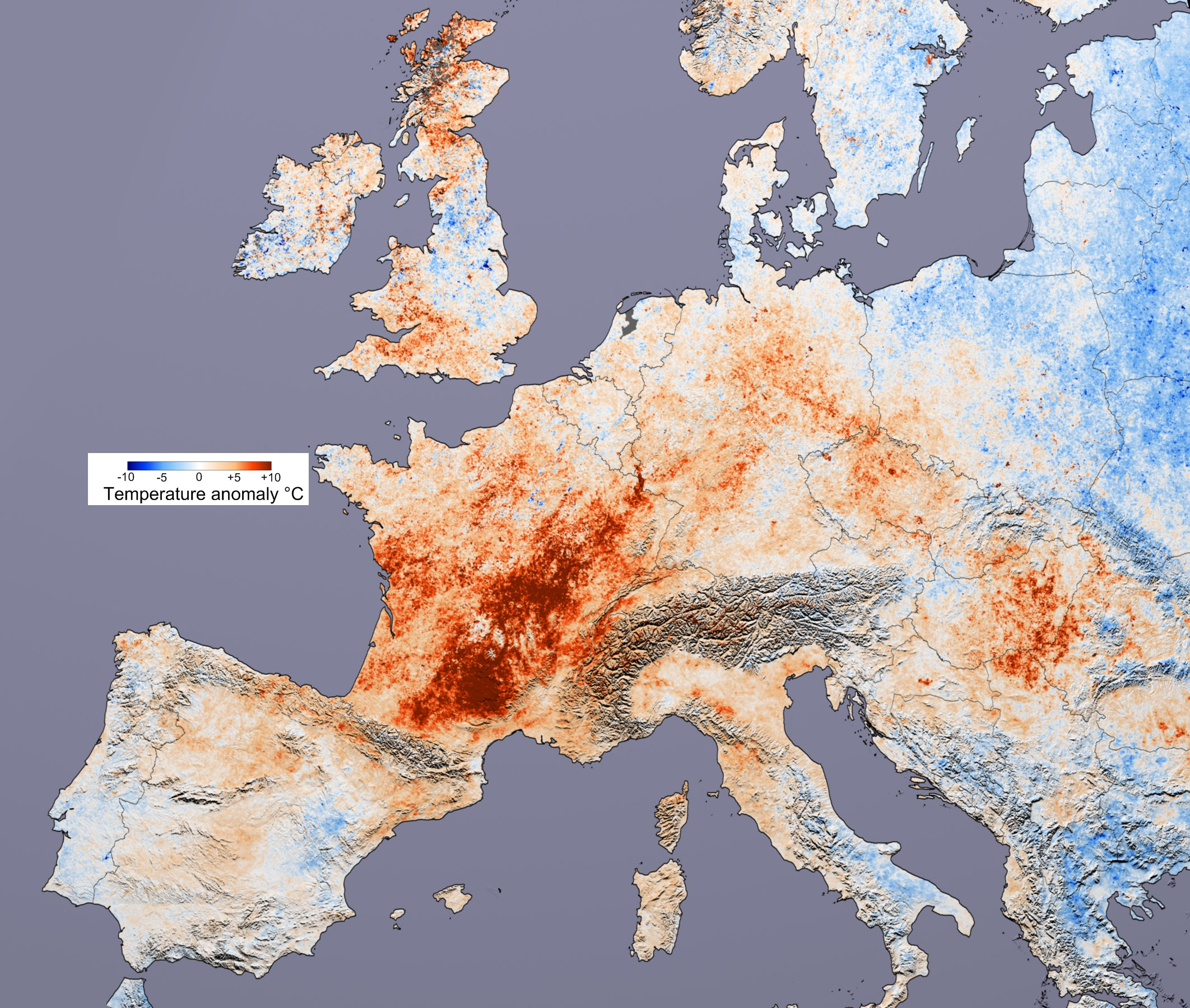|
Atlantic Oceanographic And Meteorological Laboratory
The Atlantic Oceanographic and Meteorological Laboratory (AOML), a federal research laboratory, is part of the National Oceanic and Atmospheric Administration's (NOAA) Office of Oceanic and Atmospheric Research (OAR), located in Miami in the United States. AOML's research spans tropical cyclone and hurricanes, coastal ecosystems, oceans and human health, climate studies, global carbon systems, and ocean observations. It is one of seven NOAA Research Laboratories (RLs). AOML’s organizational structure consists of an Office of the Director and three scientific research divisions. The Office of the Director oversees the Laboratory’s scientific programs, as well as its financial, administrative, computer, outreach/education, and facility management services. Research programs are augmented by Cooperative Institutes, such as the Cooperative Institute for Marine and Atmospheric Studies (CIMAS), a joint enterprise with the University of Miami’s Rosenstiel School of Marine, Atmos ... [...More Info...] [...Related Items...] OR: [Wikipedia] [Google] [Baidu] |
Virginia Key
Virginia Key is an barrier island in Miami, Florida. It is located in Biscayne Bay south of Brickell and north of Key Biscayne and is accessible from the mainland via the Rickenbacker Causeway. The island is mainly occupied by the Virginia Key Beach Park, Miami Seaquarium, Miami-Dade's Central District Wastewater Treatment Plant, and the University of Miami's Rosenstiel School of Marine, Atmospheric, and Earth Science. Other facilities include the former Miami Marine Stadium, the National Marine Fisheries Service Southeast Fisheries Science Center, and an office of the NOAA, U.S. National Oceanic and Atmospheric Administration. History What is now Virginia Key was the southern end of a barrier island that extended from the New River (Broward County, Florida), New River inlet in Fort Lauderdale, Florida, Fort Lauderdale to just north of Key Biscayne. Early accounts by Spanish explorers indicated the existence of one or more inlets somewhere on the long spit of land enclosing ... [...More Info...] [...Related Items...] OR: [Wikipedia] [Google] [Baidu] |
Alexander Dallas Bache
Alexander Dallas Bache (July 19, 1806 – February 17, 1867) was an American physicist, scientist, and surveyor who erected coastal fortifications and conducted a detailed survey to map the mideastern United States coastline. Originally an army engineer, he later became Superintendent of the United States Coast Survey, and built it into the foremost scientific institution in the country before the American Civil War. Early life and education Bache was born in Philadelphia, the son of Richard Bache, Jr., and Sophia Burrell Dallas Bache. He came from a family prominent in American politics. He was the nephew of Vice-President George M. Dallas and naval hero Alexander J. Dallas, the grandson of Secretary of the Treasury Alexander Dallas, and the great-grandson of Benjamin Franklin. Career United States Army After graduating from the United States Military Academy at West Point in 1825, as first in his class, he was an assistant professor of engineering there for some time. As ... [...More Info...] [...Related Items...] OR: [Wikipedia] [Google] [Baidu] |
Tropical Cyclone Track Forecasting
Tropical cyclone track forecasting involves predicting where a tropical cyclone is going to track over the next 120 hours (or five days), every 6 to 12 hours. The history of tropical cyclone track forecasting has evolved from a single-station approach to a comprehensive approach which uses a variety of meteorological tools and methods to make predictions. The weather of a particular location can show signs of the approaching tropical cyclone, such as increasing swell, increasing cloudiness, falling barometric pressure, increasing tides, squalls and heavy rainfall. The forces that affect tropical cyclone steering are the higher-latitude westerlies, the subtropical ridge, and the beta effect caused by changes of the coriolis force within fluids such as the atmosphere. Accurate track predictions depend on determining the position and strength of high- and low-pressure areas, and predicting how those areas will migrate during the life of a tropical system. Computer forecast m ... [...More Info...] [...Related Items...] OR: [Wikipedia] [Google] [Baidu] |
Coral Reef
A coral reef is an underwater ecosystem characterized by reef-building corals. Reefs are formed of colonies of coral polyps held together by calcium carbonate. Most coral reefs are built from stony corals, whose polyps cluster in groups. Coral belongs to the class Anthozoa in the animal phylum Cnidaria, which includes sea anemones and jellyfish. Unlike sea anemones, corals secrete hard carbonate exoskeletons that support and protect the coral. Most reefs grow best in warm, shallow, clear, sunny and agitated water. Coral reefs first appeared 485 million years ago, at the dawn of the Early Ordovician, displacing the microbial and sponge reefs of the Cambrian. Sometimes called ''rainforests of the sea'', shallow coral reefs form some of Earth's most diverse ecosystems. They occupy less than 0.1% of the world's ocean area, about half the area of France, yet they provide a home for at least 25% of all marine species, including fish, mollusks, worms, crustaceans, ... [...More Info...] [...Related Items...] OR: [Wikipedia] [Google] [Baidu] |
Climate Change
Present-day climate change includes both global warming—the ongoing increase in Global surface temperature, global average temperature—and its wider effects on Earth's climate system. Climate variability and change, Climate change in a broader sense also includes previous long-term changes to Earth's climate. The current rise in global temperatures is Scientific consensus on climate change, driven by human activities, especially fossil fuel burning since the Industrial Revolution. Fossil fuel use, Deforestation and climate change, deforestation, and some Greenhouse gas emissions from agriculture, agricultural and Environmental impact of concrete, industrial practices release greenhouse gases. These gases greenhouse effect, absorb some of the heat that the Earth Thermal radiation, radiates after it warms from sunlight, warming the lower atmosphere. Carbon dioxide, the primary gas driving global warming, Carbon dioxide in Earth's atmosphere, has increased in concentratio ... [...More Info...] [...Related Items...] OR: [Wikipedia] [Google] [Baidu] |
Carbon Cycle
The carbon cycle is a part of the biogeochemical cycle where carbon is exchanged among the biosphere, pedosphere, geosphere, hydrosphere, and atmosphere of Earth. Other major biogeochemical cycles include the nitrogen cycle and the water cycle. Carbon is the main component of biological compounds as well as a major component of many rocks such as limestone. The carbon cycle comprises a sequence of events that are key to making Earth capable of sustaining life. It describes the movement of carbon as it is recycled and reused throughout the biosphere, as well as long-term processes of carbon sequestration (storage) to and release from carbon sinks. To describe the dynamics of the carbon cycle, a distinction can be made between the ''fast'' and ''slow'' carbon cycle. The fast cycle is also referred to as the ''biological carbon cycle''. Fast cycles can complete within years, moving substances from atmosphere to biosphere, then back to the atmosphere. Slow or geological cycles (a ... [...More Info...] [...Related Items...] OR: [Wikipedia] [Google] [Baidu] |
Physical Oceanography
Physical oceanography is the study of physical conditions and physical processes within the ocean, especially the motions and physical properties of ocean waters. Physical oceanography is one of several sub-domains into which oceanography is divided. Others include biological, chemical and geological oceanography. Physical oceanography may be subdivided into ''descriptive'' and ''dynamical'' physical oceanography. Descriptive physical oceanography seeks to research the ocean through observations and complex numerical models, which describe the fluid motions as precisely as possible. Dynamical physical oceanography focuses primarily upon the processes that govern the motion of fluids with emphasis upon theoretical research and numerical models. These are part of the large field of Geophysical Fluid Dynamics (GFD) that is shared together with meteorology. GFD is a sub field of Fluid dynamics describing flows occurring on spatial and temporal scales that are greatly influenced ... [...More Info...] [...Related Items...] OR: [Wikipedia] [Google] [Baidu] |
Meridional Overturning Circulation
Thermohaline circulation (THC) is a part of the large-scale ocean circulation driven by global density gradients formed by surface heat and freshwater fluxes. The name ''thermohaline'' is derived from '' thermo-'', referring to temperature, and ', referring to salt content—factors which together determine the density of sea water. Wind-driven surface currents (such as the Gulf Stream) travel polewards from the equatorial Atlantic Ocean, cooling and sinking en-route to higher latitudes - eventually becoming part of the North Atlantic Deep Water - before flowing into the ocean basins. While the bulk of thermohaline water upwells in the Southern Ocean, the oldest waters (with a transit time of approximately 1000 years) upwell in the North Pacific; extensive mixing takes place between the ocean basins, reducing the difference in their densities, forming the Earth's oceans a global system. The water in these circuits transport energy - as heat - and mass - as dissolved solids ... [...More Info...] [...Related Items...] OR: [Wikipedia] [Google] [Baidu] |
Extreme Weather
Extreme weather includes unexpected, unusual, severe weather, severe, or unseasonal weather; weather at the extremes of the historical distribution—the range that has been seen in the past. Extreme events are based on a location's recorded weather history. The main types of extreme weather include heat waves, cold waves, droughts, and heavy precipitation or storm events, such as tropical cyclones. Extreme weather can have various effects, from natural hazards such as floods and landslides to social costs on human health and the economy. Severe weather is a particular type of extreme weather which poses risks to life and property. Weather patterns in a given region vary with time, and so extreme weather can be attributed, at least in part, to the natural Climate variability and change, climate variability that exists on Earth. For example, the El Niño–Southern Oscillation, El Niño-Southern Oscillation (ENSO) or the North Atlantic oscillation (NAO) are climate phenomena that i ... [...More Info...] [...Related Items...] OR: [Wikipedia] [Google] [Baidu] |
Tropical Meteorology
A tropical cyclone is a rapidly rotating storm system with a low-pressure area, a closed low-level atmospheric circulation, strong winds, and a spiral arrangement of thunderstorms that produce heavy rain and squalls. Depending on its location and strength, a tropical cyclone is called a hurricane (), typhoon (), tropical storm, cyclonic storm, tropical depression, or simply cyclone. A hurricane is a strong tropical cyclone that occurs in the Atlantic Ocean or northeastern Pacific Ocean. A typhoon is the same thing which occurs in the northwestern Pacific Ocean. In the Indian Ocean and South Pacific, comparable storms are referred to as "tropical cyclones". In modern times, on average around 80 to 90 named tropical cyclones form each year around the world, over half of which develop hurricane-force winds of or more. Tropical cyclones typically form over large bodies of relatively warm water. They derive their energy through the evaporation of water from the ocean surface ... [...More Info...] [...Related Items...] OR: [Wikipedia] [Google] [Baidu] |
Environmental Science Services Administration
The Environmental Science Services Administration (ESSA) was a United States federal government, United States Federal executive agency created in 1965 as part of a reorganization of the United States Department of Commerce.Reorganization Plan No. 2 of 1965 Its mission was to unify and oversee the Meteorology, meteorological, Climatology, climatological, Hydrography, hydrographic, and Geodesy, geodetic operations of the United States. It operated until 1970, when it was replaced by the new National Oceanic and Atmospheric Administration (NOAA). The first U.S. Government organization with the word "environment" in its title, ESSA was the first such organization chartered to study the global natural environment as whole, bringing together th ... [...More Info...] [...Related Items...] OR: [Wikipedia] [Google] [Baidu] |
United States Coast And Geodetic Survey
The United States Coast and Geodetic Survey ( USC&GS; known as the Survey of the Coast from 1807 to 1836, and as the United States Coast Survey from 1836 until 1878) was the first scientific agency of the Federal government of the United States, United States Government. It existed from 1807 to 1970, and throughout its history was responsible for mapping and charting the coast of the United States, and later the coasts of Territories of the United States, U.S. territories. In 1871, it gained the additional responsibility of surveying the interior of the United States and geodesy became a more important part of its work, leading to it being renamed the U.S. Coast and Geodetic Survey in 1878. Long the U.S. government's only scientific agency, the Survey accumulated other scientific and technical responsibilities as well, including astronomy, cartography, metrology, meteorology, geology, geophysics, hydrography, navigation, oceanography, exploration, Piloting, pilotage, tides, and ... [...More Info...] [...Related Items...] OR: [Wikipedia] [Google] [Baidu] |






